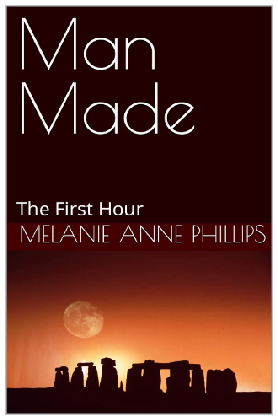|
Write Your Novel |
By Melanie Anne Phillips
Creator of StoryWeaver
Read it free on our web site!
|
For Story Structure |
|
For Story Development |
|
|

Read the Science Fiction Thriller
From the founder of Storymind
Man Made follows a mysterious force as it sweeps around the globe erasing anything man made -
Governments stagger under the panic, religions are at a loss for an explanation, scientists strive for any means to stop or divert the phenomenon, and the world’s population from families to individuals struggle to prepare for The Event, which will drive humanity back beyond the stone age.
The Event is coming.
Are you prepared?
Copyright Melanie Anne Phillips
|
|
Free Writing Resources
~ Step 66 ~
Exposition of your Goal
Now that you have enriched your novel with additional development of your plot, characters, theme and genre, we’re going to shift gears and consider how that information will be revealed to your readers.
Just because you know these things about your story doesn’t mean your readers will as a result of what you write. One of the easiest mistakes to make, especially for first time novelists, is to write without an exposition plan, simply trying to tell the story.
While this is a very free form and organic way to get your novel told, you are likely to leave out important information because you are so familiar with it that you don’t think to specifically include it.
So in this step, we’ll begin the process of ensuring that all the essential information you know about your novel is conveyed to your readers, starting with your story’s goal.
Sometimes the goal is spelled out right at the beginning, such as a meeting in which a general tells a special strike unit that a senator's daughter has been kidnapped by terrorists and they must rescue her.
Other times, the goal is hidden behind an apparent goal. So, if your story had used the scene described above, it might turn out that was really just a cover story and in fact, the supposed "daughter" was actually an agent who was assigned to identify and kill a double agent working in the strike team.
Goals may also be revealed slowly, such as in "The Godfather," where it takes the entire film to realize the goal is to keep the mob organization alive by replacing the aging Don with a younger member of the family.
Further, in "The Godfather," as in many Alfred Hitchcock films, the goal is not nearly as important as the chase or the inside information or the thematic atmosphere. So don't feel obligated to elevate every story point to the same level.
As long as each key story point is there in some way, to some degree of importance, there will be no story hole. Still, you may have a lot of interest in a particular story point. A character's personal goal, for example, may touch on an issue that you want to explore in greater detail.
When this is the case, let your imagination run wild. Jot down as many instances as come to mind in which the particular plot point comes into play. Such events, moments, or scenarios enrich a story and add passion to a perfunctory telling of the tale.
One of the best ways to do this is to consider how each plot point might affect other plot points, and other story points pertaining to characters, theme, and genre.
For example, each character sees the overall goal as a step in helping them accomplish their personal goals. So, why not create a scenario where a character wistfully describes his personal goal to another character while sitting around a campfire? He can explain how achievement of the overall story goal will help him get what he personally wants.
An example of this is in the John Wayne classic movie, "The Searchers." John Wayne's character asks an old, mentally slow friend to help search for the missing girl. Finding the girl is the overall goal. The friend has a personal goal -
And how does your story goal exemplify or affect the moral or message of your story as part of the theme? When you see the story goal mentioned in your story synopsis, determine if you can incorporate aspects of theme, and when you see theme, try to add a reference to the goal.
In “Huckleberry Finn,” Mark Twain has the boy cooking up some food for Tom Sawyer. He puts all the vegetables and meat in the same pan and explain that his pop taught him that food is better when the flavors all "swap around" a bit.
The same is true for stories. Don't speak just about goal, speak about goal in reference to as many other story points as you can.
Your task for this step -